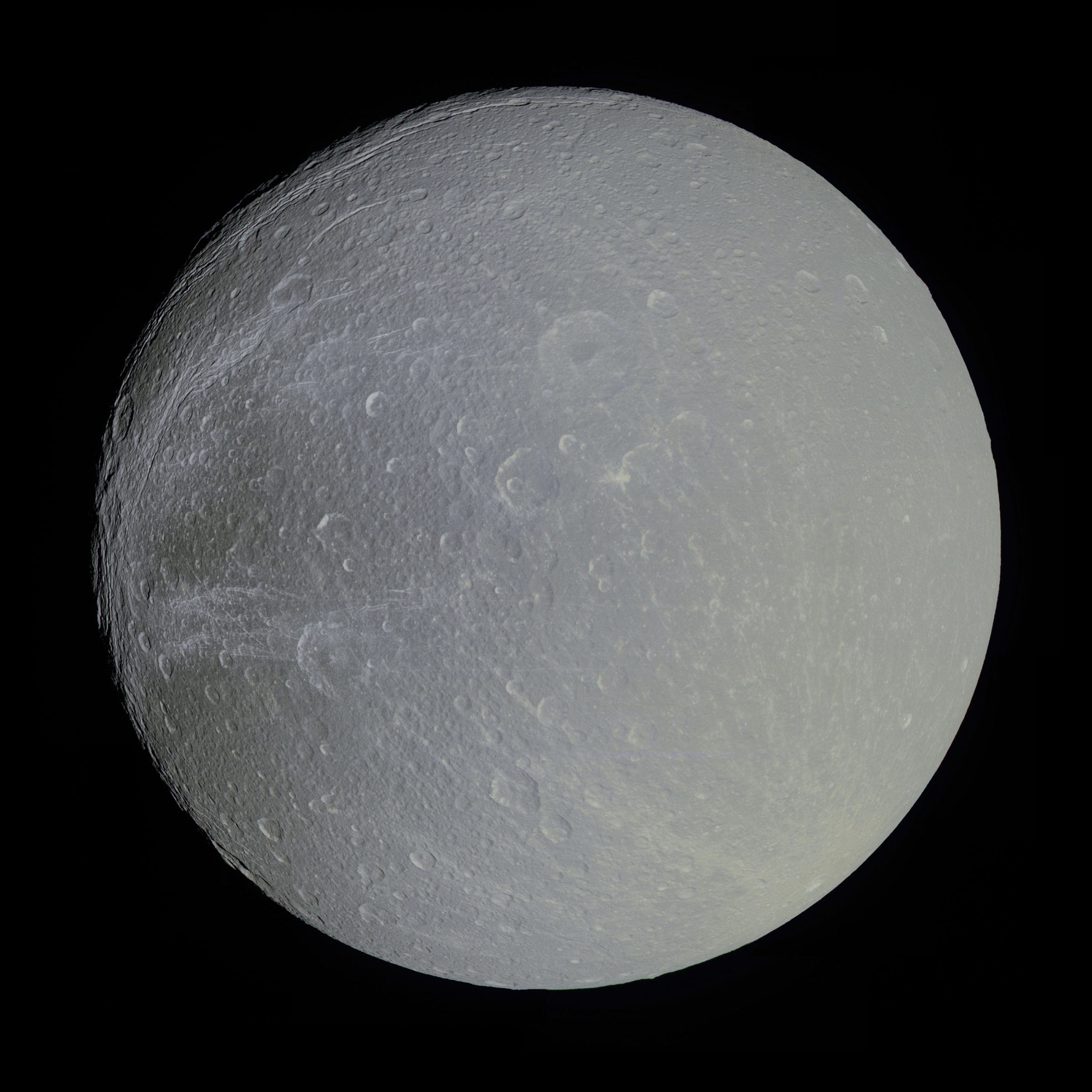Emily Lakdawalla • Oct 23, 2012
A huge color global view of Dione
Here's an example of the kinds of images just waiting in the NASA data archives for someone resourceful to find. Before this mosaic could come to light, Marc Canale had to assemble at least 45 separate Cassini frames, first into 15 color framelets and then into the big mosaic you see below. Since Cassini and Dione were in motion the whole time, it takes some pretty fiddly work to get everything to line up as nicely as Marc has here. At full resolution the mosaic is at roughly 250 meters per pixel; the whole moon is 1122 kilometers across, one of several one-megameter iceballs in the outer solar system.

If you're paying really close attention and wondering how a 4-by-4 array produces 15 framelets, it's actually a 3-by-4 array covering most of the disk, with only 3 instead of 4 frames needed to finish covering the limb. If you'd like to see the data that went into this mosaic, you can browse it here.
Support our core enterprises
Your support powers our mission to explore worlds, find life, and defend Earth. You make all the difference when you make a gift. Give today!
Donate

 Explore Worlds
Explore Worlds Find Life
Find Life Defend Earth
Defend Earth

